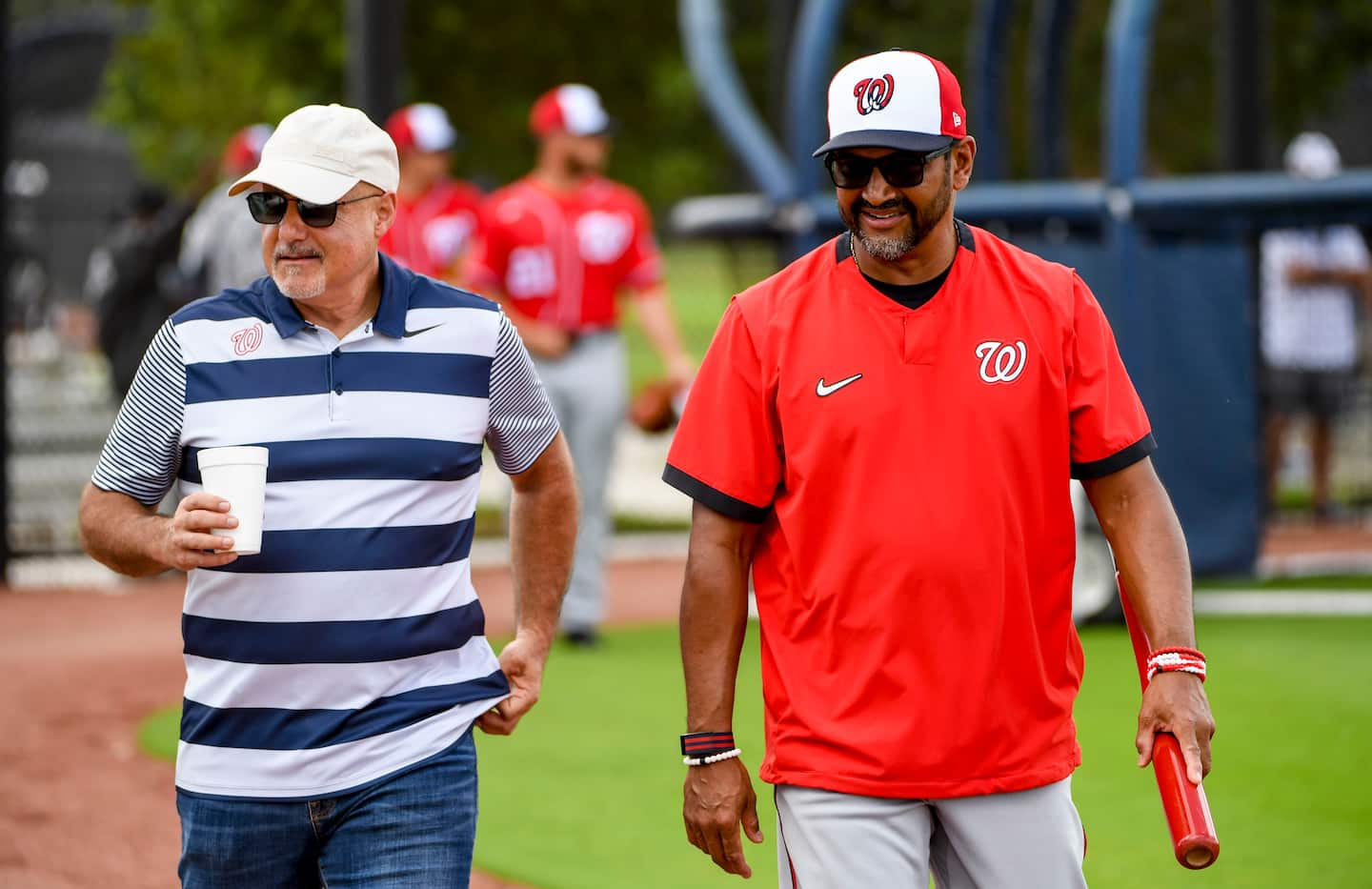Jon Lester’s reasonable contract leaves the Nationals room to address their remaining needs

That doesn’t mean a big move is next. J.T. Realmuto, the last marquee free agent who makes sense for Washington, seems out of reach and is being heavily courted by the Philadelphia Phillies. He should demand a long-term, nine-figure contract as the sport’s best catcher. But a glance at the Nationals’ payroll, even with unofficial numbers, shows space to firm up the edges of their roster and stay roughly $10 million under the competitive balance tax threshold.
Right now, according to Cot’s Baseball Contracts, the Nationals have just below $183 million committed to 40-man roster players for 2021. That puts Washington around $27 million below the threshold, set at $210 million for this year. And if General Manager Mike Rizzo wants to leave a cushion below the threshold — as he often does for in-season additions — the front office has about $17 million to get a second catcher, a backup first baseman and a reliever or two if it believes the bullpen isn’t finished.
Many teams, the Nationals included, avoid the CBT threshold so they aren’t subject to overage taxes. Some also use the threshold to justify not springing for the best available talent. It provides an unofficial spending ceiling for a sport that doesn’t have a salary cap. The first time a club goes above the threshold, it pays a 20 percent tax on every dollar. It pays 30 percent for the second time and 50 percent for the third. There are additional penalties for spending between $20 million and $40 million over, and even more for spending over that. All penalties then reset whenever a team does not surpass the threshold in a given year.
Words such as roughly, around and about are used a lot when discussing MLB payrolls. That’s because teams are not required to open their books, and most contracts are publicized through leaks and piecemeal reporting. Cot’s, the top resource for team payrolls, then takes that reporting and plugs it into neat spreadsheets, projecting how close each club is to the threshold while accounting for odd factors such as inflation or interest on deferred money. It’s a complicated, inexact process that could be untangled by a few extra doses of transparency.
The Nationals’ 2020 payroll was around $196 million, according to Cot’s, before salaries were prorated for the shortened season. That was below the threshold and means Washington would get taxed the minimum 20 percent if it went above this season. But a similar payroll to 2020, or one a bit higher, is a fair expectation after several veterans came off the books in November.
Lester, Kyle Schwarber and Josh Bell, the Nationals’ three biggest acquisitions, will make a combined $16.35 million in 2021. Their contracts bring the club about $20 million closer to the CBT threshold for 2021, factoring in Schwarber’s $3 million buyout — should the team not pick up his mutual option — and Lester’s $3 million deferred signing bonus.
With the structure of the Lester and Schwarber deals, Washington lessened its immediate commitments and stayed flexible. A bulk of its payroll is tied up in mega contracts for Max Scherzer, Stephen Strasburg and Patrick Corbin. Those three pitchers alone will account for roughly $87 million toward the CBT threshold in 2021. That forces the Nationals to be creative with their remaining holes.
Here’s how the Nationals’ 26-man roster looks less than a month before the scheduled start of spring training:
Catcher — Yan Gomes
First base — Josh Bell
Second base — Starlin Castro
Third base — Carter Kieboom
Shortstop — Trea Turner
Outfield — Kyle Schwarber, Victor Robles, Juan Soto
Bench — Josh Harrison, Andrew Stevenson, OPEN (second catcher), OPEN (backup first baseman), OPEN
Rotation — Max Scherzer, Stephen Strasburg, Patrick Corbin, Jon Lester, Joe Ross/Erick Fedde/Austin Voth
Bullpen — Daniel Hudson, Will Harris, Tanner Rainey, Wander Suero, Kyle Finnegan, Sam Clay, Kyle McGowin, Joe Ross/Erick Fedde/Austin Voth
This roster projection makes a few assumptions. One is that the Nationals fill out their bullpen with Clay and McGowin, who could both become depth options — swinging between the majors and minors — if the club sees a chance to add relievers. Another is that Gomes will make most of the starts behind the plate, as Manager Dave Martinez said in December. Another is that Kieboom will start at third while Washington puts Luis García in the minors, where he can continue to develop and play every day.
If those assumptions are correct, two or three reserves are the last items on Rizzo’s to-do list. Ryan Zimmerman is a logical fit next to Bell, who, as a switch hitter, has much better numbers from the left side of the plate. Zimmerman, 36, signed a one-year, $2 million contract last January before opting out of the season because of coronavirus concerns. That he’s a year older, and didn’t play in 2020, could lower what he would demand to slot behind Bell and be a right-handed option for Martinez. Zimmerman plans to return for a 16th year, and he has long made it clear he wants to start and finish his career in Washington.
From there, the Nationals have to find a catcher to pair with Gomes, then figure out the smartest way to polish off the bench and bullpen. The market is flush with options — and so, in theory, are the lower rungs of the 40-man roster. But the Nationals, by some back-of-the-napkin math, should have more to spend.






